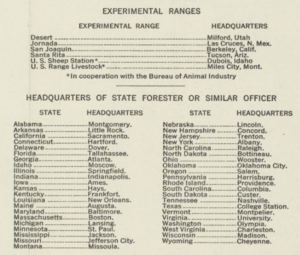Our July Map of the Month is this 1934 “National Forests, State Forests, National Parks, National Monuments, and Indian Reservations” by the U.S Department of Agriculture and the U.S Forest Service. This historic map acts as a point of reference to compare how much land in the United States has been conserved and protected for the benefit of the public since its publication.

Following the rampant deforestation of the late 19th century, it was evident in the eyes of the United States Department of Agriculture that these lands were at risk of elimination. Carelessness and overconsumption of timber and old growth forests left the land stark after westward expansion until 1876, when Congress created the Division of Forestry. Years following the creation of the division, the Forest Reserve Act of 1891 was put into place when public land policy and continuous exploitative logging put pressure on the Department of the Interior to act quickly.
The rarity of this map comes from the history of its production; because the Forest Service and Department of Agriculture aren’t primarily mapping Bureaus, only a few copies of these maps are produced to mitigate unnecessary print and production costs. Filled with bureaucratic headquarters and related information, these maps stay filed within the Forest Service while maps portraying recreation areas and Forest Service regulations are free to the public.
With a total of 12 depicted national parks, it’s evident how society’s views on public land access and conservation has expanded in the last century as the United States now boasts 63 national park sites, 83 national monuments, and 154 national forests. The majority of protected forests and parks spanned through the northwest region of the country, from Colorado to Washington where improper land-usage and its consequences were most visible. The date of national forest, state forest, or national park establishments from this region ranged between 1897 and 1908, whereas establishments in Arizona and New Mexico began in 1902 and ended in 1918.
An exceptionally noticeable difference in the categorization of localities of Arizona is the depiction of the Grand Canyon. In 1934, the west and east halves of the park were previously categorized as different entities; the west side being Grand Canyon National Monument, and the east being Grand Canyon National Park.

We hope you enjoyed this month's map! As with all of our Map of the Month features, if you’d like to learn more about this map, get a scan of this map, or schedule a visit to explore our maps in person, please submit a Map and Geo Service Request. We’ll be sure to get back to you within two business days, but typically sooner.
- Eric Friesenhahn, Map and GIS Specialist
